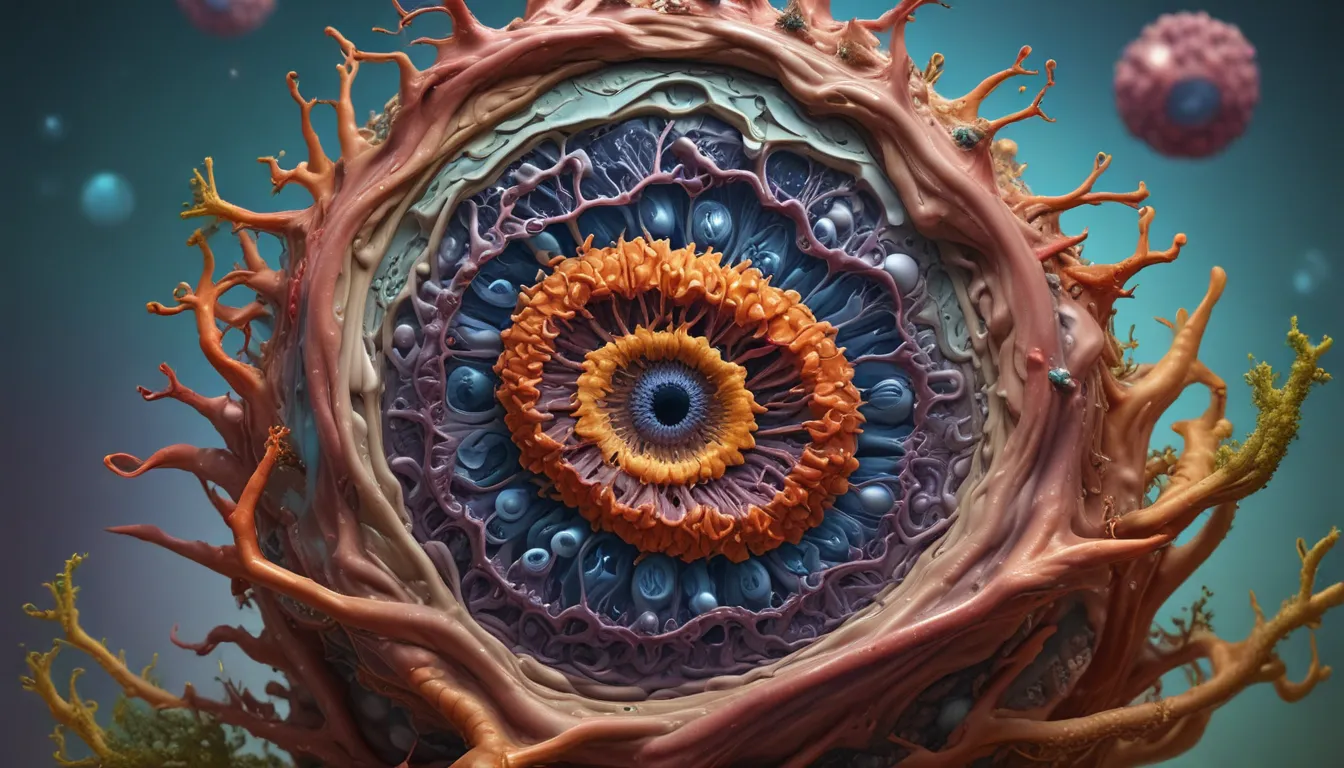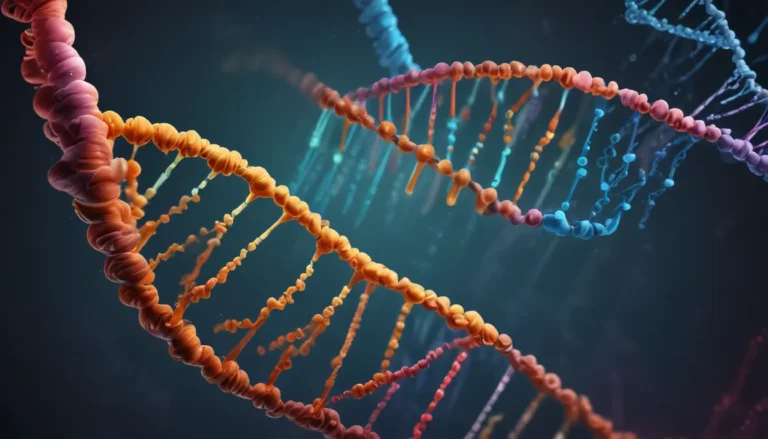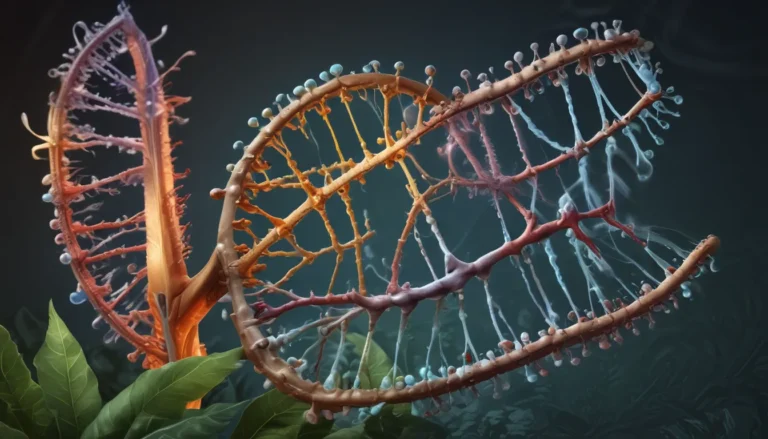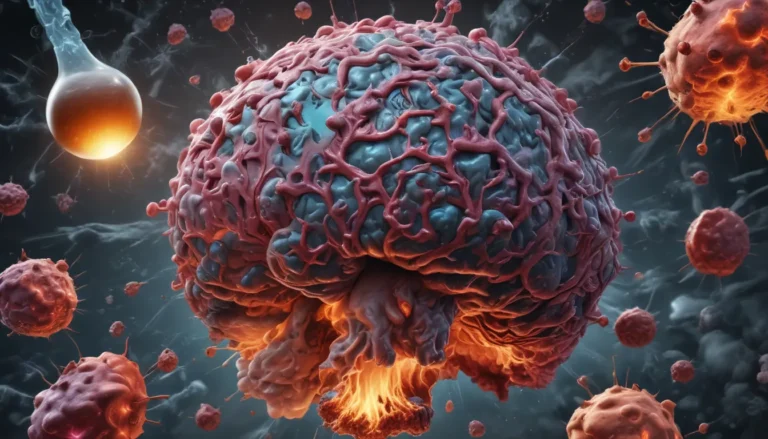A Note About Images: The images used in our articles are for illustration purposes only and may not exactly match the content. They are meant to engage readers, but the text should be relied upon for accurate information.
Have you ever wondered how the intricate machinery of eukaryotic cells, including humans and plants, came to be? Enter the captivating world of endosymbiotic theory, a revolutionary scientific concept proposed by Lynn Margulis in the 1960s. This theory challenges conventional beliefs about the origins of cellular structures by suggesting that certain organelles, such as mitochondria and chloroplasts, were once independent bacteria that formed symbiotic relationships with host cells.
Join us as we explore 20 extraordinary facts about endosymbiotic theory, delving into the profound impact it has had on our understanding of the natural world and the evolution of complex life forms.
Unveiling the Origins of Endosymbiotic Theory
The genesis of endosymbiotic theory can be traced back to the visionary biologist Lynn Margulis, who introduced this groundbreaking concept in the 1960s as a means to unravel the mysteries of eukaryotic cell evolution.
The Marvels of Mitochondria and Chloroplasts
Did you know that mitochondria and chloroplasts, essential organelles in eukaryotic cells, were once free-living bacteria that entered into symbiotic relationships with host cells? This symbiosis paved the way for the evolution of complex organisms like humans and plants.
Illuminating the Evolution of Complex Cells
Endosymbiotic theory has revolutionized our understanding of how intricate eukaryotic cells, with their membrane-bound organelles, emerged from simpler prokaryotic cells. The integration of mitochondria and chloroplasts played a pivotal role in shaping the diversity of life forms on Earth.
Decoding the Role of Mitochondria in Cellular Respiration
An intriguing aspect of endosymbiotic theory is its explanation of mitochondria as the powerhouse of the cell, responsible for generating energy through cellular respiration. This crucial function underscores the symbiotic relationship between organelles and host cells.
Unraveling the Secrets of Chloroplasts and Photosynthesis
Chloroplasts, the green organelles responsible for capturing sunlight and conducting photosynthesis, have their origins rooted in the symbiotic relationships postulated by endosymbiotic theory. This process of harnessing solar energy is a testament to the harmonious coexistence of organisms within cells.
Charting the Evolution of Multicellular Organisms
Endosymbiotic theory has provided a mechanism for the acquisition of new organelles, contributing to the evolutionary trajectory of multicellular organisms and the enhancement of cellular complexity. This symbiotic dance has shaped the diversity of life forms on our planet.
Unveiling Evidence from Comparative Genomics
Through comparative genomics studies, scientists have uncovered compelling evidence supporting endosymbiotic theory. The similarities between the DNA of mitochondria and chloroplasts and that of bacteria offer a glimpse into the ancient symbiotic relationships that shaped cellular evolution.
Exploring Horizontal Gene Transfer and Evolution
Horizontal gene transfer, the exchange of genetic material between organisms, has played a pivotal role in the evolution of endosymbiotic relationships and the acquisition of novel traits. This genetic mingling has fueled the diversity of life forms through symbiotic interactions.
Shedding Light on the Evolution of the Eukaryotic Nucleus
Endosymbiotic theory posits that the nucleus of eukaryotic cells originated from the engulfment of a prokaryotic cell, setting the stage for the establishment of symbiotic relationships within cells. This pivotal event laid the foundation for the evolution of complex cellular structures.
Pioneering the Evolution of Complex Life Forms
The concept of endosymbiosis has provided a framework for understanding the emergence and evolution of complex life forms, including plants, animals, and humans, over millions of years. This interconnected web of symbiotic relationships has sculpted the rich tapestry of life on Earth.
Navigating the Tree of Life with Endosymbiotic Theory
Endosymbiotic theory has reshaped our understanding of the evolutionary relationships between diverse organisms, contributing to the construction of the tree of life. This interconnectedness highlights the shared ancestry and symbiotic alliances that define the intricate web of life.
Tracing Human Evolution through Mitochondrial DNA
Scientists have unraveled the genetic ancestry of humans through mitochondrial DNA analysis, tracing our lineage back to a common female ancestor known as Mitochondrial Eve. This genetic thread weaves a compelling narrative of symbiosis and evolution in the human story.
Embracing Symbiosis in Nature
Endosymbiotic theory underscores the prevalence of symbiotic relationships in nature, illuminating the interdependence between organisms in maintaining ecological balance. From microscopic cells to vast ecosystems, symbiosis pervades the natural world with its intricate web of connections.
Delving into Endosymbiosis in Marine Ecosystems
Marine ecosystems abound with examples of endosymbiotic relationships, such as those between corals and photosynthetic algae. These partnerships enable organisms to thrive by sharing nutrients and energy, showcasing the profound impact of symbiosis in aquatic environments.
Unveiling the Origins of Bacterial Pathogens
The acquisition of endosymbionts has played a pivotal role in the evolution of certain bacteria into pathogenic organisms capable of causing diseases in humans and animals. This evolutionary journey underscores the complex interplay between symbiosis and pathogenicity in microbial communities.
Illuminating the Origins of Antibiotic Resistance
Endosymbiotic relationships have contributed to the development of antibiotic resistance in bacteria, presenting a formidable challenge in modern healthcare and agriculture. The evolution of resistance underscores the adaptive capabilities of organisms within symbiotic environments.
Harnessing Symbiosis for Evolutionary Innovations
Endosymbiotic theory underscores the role of symbiotic interactions in driving evolutionary innovations, from the development of eukaryotic cells to the emergence of new species. This dynamic interplay between organisms has shaped the tapestry of life through symbiotic collaborations.
Embracing the Concept of Holobionts
Endosymbiotic relationships have ushered in the concept of holobionts, ecological units comprising a host organism and its associated symbiotic microorganisms. This holistic view of symbiosis underscores the interconnectedness of organisms in shaping diverse ecosystems.
Unraveling the Origin of Organelles through Endosymbiotic Theory
Endosymbiotic theory elucidates the origins of vital organelles like the Golgi apparatus and the endoplasmic reticulum, which play indispensable roles in cellular processes. This evolutionary journey highlights the transformative power of symbiosis in shaping cellular complexity.
Nurturing Future Endeavors in Endosymbiotic Research
As a vibrant area of scientific inquiry, endosymbiotic theory continues to inspire researchers to explore new insights into the origin and maintenance of symbiotic relationships. The pursuit of knowledge in this field promises to unveil further mysteries of cellular evolution.
In Conclusion: Unveiling the Wonders of Endosymbiotic Theory
In conclusion, the enigmatic realm of endosymbiotic theory unveils a captivating narrative of cellular evolution and symbiotic partnerships that have shaped life on Earth. From the origins of mitochondria and chloroplasts to the evolution of complex life forms, this theory offers a window into the interconnected web of life that defines our world. As we unravel the mysteries of symbiosis and evolution, we embark on a journey of discovery that illuminates the beauty and complexity of the natural world.
FAQs: Navigating the Intricacies of Endosymbiotic Theory
Q: What is endosymbiotic theory?
A: Endosymbiotic theory proposes that certain organelles within eukaryotic cells, such as mitochondria and chloroplasts, originated as free-living prokaryotic organisms that formed symbiotic relationships with host cells.
Q: How does symbiosis play a role in endosymbiotic theory?
A: Symbiosis, a mutually beneficial relationship between different organisms, lies at the heart of endosymbiotic theory. The integration of symbiotic organisms as organelles within host cells reshapes our understanding of cellular evolution.
Q: What evidence supports the endosymbiotic theory?
A: Multiple lines of evidence, including genetic similarities between organelles and bacteria, the presence of DNA within organelles, and their ability to replicate independently, bolster the credibility of endosymbiotic theory in unraveling cellular evolution.
Q: Can endosymbiotic theory explain the complexity of eukaryotic cells?
A: Yes, endosymbiotic theory provides a compelling explanation for the complex structure of eukaryotic cells by elucidating how the integration of organelles like mitochondria and chloroplasts drove the evolution of cellular functions and structures.
Q: How does endosymbiotic theory relate to evolution?
A: Endosymbiotic theory intricately intertwines with the concept of evolution by elucidating how symbiotic relationships between organisms led to the development of eukaryotic cells and the diversification of life forms through collaborative adaptations.
Embark on a journey through the realms of cellular evolution and symbiotic partnerships with endosymbiotic theory as your guide. Delve into the wonders of mitochondria, chloroplasts, and the intricate web of life that shapes our world. Join us in unraveling the mysteries of symbiosis and evolution, forging new pathways of discovery in the captivating realm of cellular biology.






